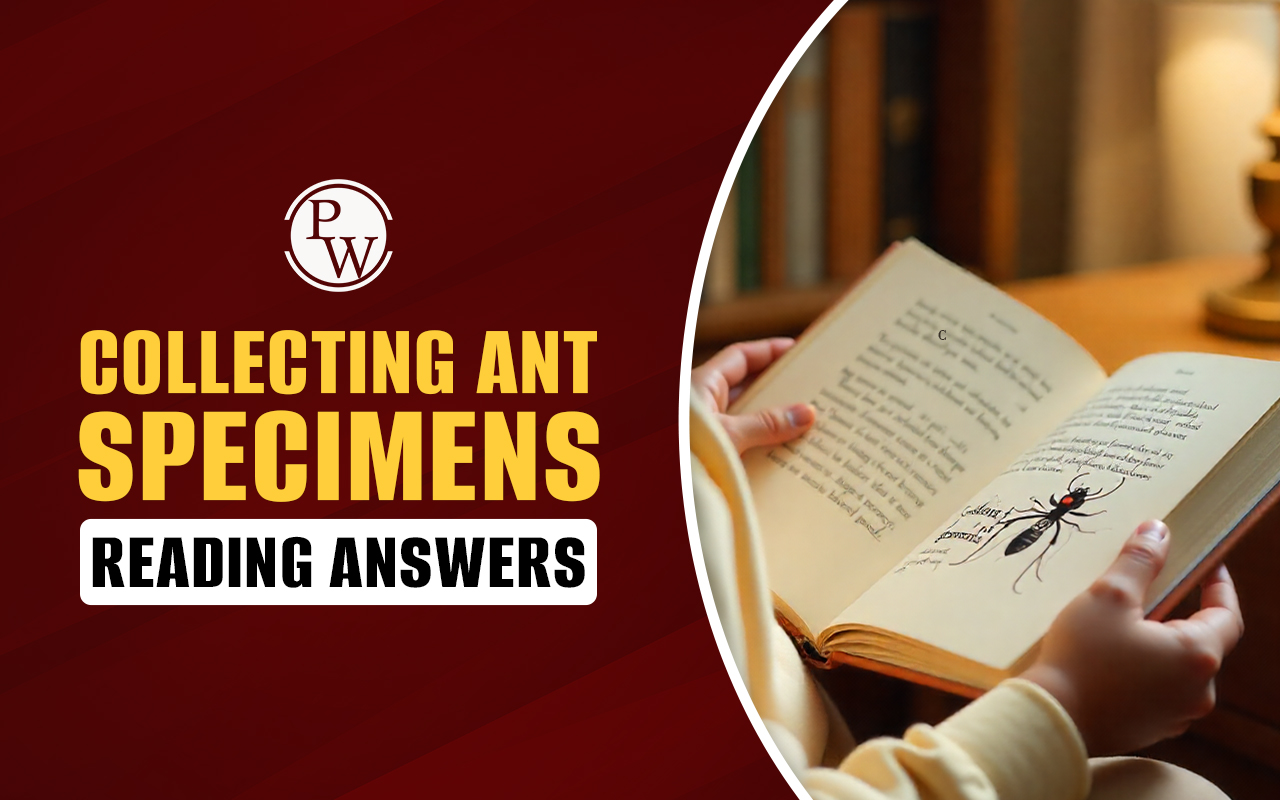

Monkeys And Forests Reading Answers: The IELTS Reading section includes a reading passage on Monkeys And Forests Reading Answers. The passage includes a total of 14 questions based on how monkeys adapt to human-altered environments. The questions are categorized into three categories. Students are advised not to spend more than 20 minutes in this passage section. Monkeys And Forests Reading Answers topic is a very common question asked in the IELTS Reading test . Students are advised to practice sample questions to improve their IELTS Reading band score .
Free IELTS Reading Practice Tests, Cambridge Sample Test PDF
Monkeys And Forests Reading Answers Passage
Monkeys and Forests Reading Passage
Paragraph A: A woman-mantled howler monkey glides through the swaying branches of the forest canopy as an east wind rages through a break in the Cordillera de Tilaran. This rocky mountain range separates northern Costa Rica in half. Paragraph B: Ken Glander, a primatologist from Duke University, watches the female's motions as she moves through the canopy. He patiently awaits the ideal opportunity to shoot while holding a dart gun. Glander takes tremendous care in his aim and firing. When the rump gets hit, the monkey sways. This howler is a member of a population that has lived for many years at the operating cattle ranch Hacienda La Pacifica in the province of Guanacaste. Spider monkeys and white-faced capuchin monkeys used to be common in this area, but after the Pan-American Highway became operational nearby in the 1950s, they vanished. The majority of the nearby area had been clear-cut for pasture. Paragraph C: Howlers at La Pacifica, according to Glander, survived because they ate leaves. They eat fruit when it is available, but unlike capuchin and spider monkeys, they do not depend on vast areas of fruit-bearing trees. Due to their adaptable dietary habits, howlers can live anywhere there are six trees, according to him. In forests, there is a constant struggle for survival between the trees and the countless animals that consume leaves. Plants have developed a wide range of chemical defences, from poisonous alkaloids and cyanide to hazardous tannins that bind to nutrients produced by plants and render them indigestible. Paragraph D: All primates, including humans, are capable of getting rid of toxins to some extent. We can rid our bodies of caffeine, a terrible chemical that kills many animals. states Glander. Long-term exposure to a certain plant toxin can increase a leaf-ability eater's to both neutralise the poison and absorb the nutrients from the leaves. Less disturbed, centuries-old trees that persist further south, in the Amazon Basin, generate leaves that are actually less howler-friendly than those that grow in regenerating forests, like those at La Pacifica. Younger forests have trees that focus most of their scarce energy on producing fruit, leaves, and wood, which results in far lesser toxin production than mature, old-growth trees. Paragraph E: About 35 miles northwest of Hacienda La Pacifica, in Santa Rosa National Park, researchers are looking at the importance of maturing forests to primates. In addition to white-faced capuchins and spider monkeys, the park also has colonies of mantled howler monkeys. However, the majority of the forests there are under 50 years old, making them youthful. When the trees were as young as 14 years old, Capuchins were the first to start exploiting the regenerated woodlands. Howlers require slightly older trees with limbs that can support their heavier bodies because they are bigger and heavier than capuchins. Another factor contributing to Santa Rosa's population rise is the Hacienda La Pacifica working ranch. Fedigan explains that there are a number of reasons why howler monkeys are more adaptable than capuchin and spider monkeys.Paragraph F: Additionally, compared to other local monkey species, howlers reproduce more quickly. Howler monkeys give birth for the first time at around 3.5 years of age, while capuchins wait until they are approximately 7 years old, and spider monkeys wait even longer. In addition, well-fed howler monkeys can give birth to a youngster every two years, as opposed to a female spider monkey's about every four years.
Paragraph G: Howler monkeys can survive away from open streams and water holes because the leaves they consume are filled with water. They have a distinct edge over capuchin and spider monkeys, which have suffered during Guanacaste's lengthy drought because of this trait.
Paragraph H: In Central and South America, pressures from a growing human population have resulted in ongoing forest loss. About 1.1 million acres per year of Central American forest were cleared throughout the 1990s. Ecologist Alejandro Estrada of Estacion de Biologia Los Tuxtlas in Veracruz, Mexico, has been researching how monkeys live in a world that is being altered by people more and more. Recently, he and his colleagues conducted research on the ecology of a tribe of mantled howler monkeys living in a cocoa plantation in Tabasco, Mexico, an environment that has been entirely transformed by humans. Their owners planted fig, monkey pods, and other big trees 40 years ago to create a protective canopy above their crop because cacao plants, like many types of coffee, need shade to develop. After the surrounding woodlands were cleared, the howlers migrated there about 25 years ago. This odd environment, a mix of domesticated native and exotic flora, appears to be home to roughly the same number of monkeys as a comparable-sized area of wild forest. Farmers approve of howlers because they consume the leaves and fruit of the shade trees but leave the prized cacao pods alone.
Paragraph I: Estrada thinks the monkeys' contributions to these farms, like spreading the seeds of figs and other shade trees and nourishing the ground with their waste, go unappreciated. He notes that howler monkeys inhabit the shadow of cocoa and coffee plantations in Nicaragua, Costa Rica, and Mexico. Although they require neighbouring forested regions to live over the long term, spider monkeys will also browse in such plantations. He is hoping that farmers would start to recognize the benefits of cooperating with wild monkeys, including prospective tourist initiatives.
Paragraph J: According to Estrada, "Conservation is usually viewed as an adversary between practices in agriculture and the desire to preserve nature." We're giving up on that idea and starting to think about how agriculture may help preserve primates in environments that have undergone human intervention.Monkeys And Forests Reading Answers Sample Questions
Monkeys And Forests Reading Answers: Questions 1–6:Which paragraph contains the following information? Write the correct letter, A–H, in boxes 1–6 on your answer sheet. 1. A description of how human activity led to the disappearance of certain monkey species. 2. An explanation of how younger forests benefit howler monkeys. 3. A comparison of the reproduction rates of different monkey species. 4. How howler monkeys survive during droughts. 5. A description of how certain plantations support monkey populations. 6. A mention of the long-term benefits monkeys provide to farmers.
Monkeys And Forests Reading Answers: Questions 7–9:Look at the places and the list of headings below. Match each description to the appropriate location. Write the correct letter, A–E, in boxes 7–9. Locations: A. Hacienda La Pacifica B. Santa Rosa National Park C. Cordillera de Tilaran D. Amazon Basin E. Tabasco, Mexico 7. Monkeys adapted to living on cocoa plantations. 8. Howlers were able to survive by eating leaves when other monkeys disappeared. 9. A place where monkeys first used regenerating forests when the trees were still young.
Monkeys And Forests Reading Answers: Questions 10–14:Complete the sentences below using NO MORE THAN TWO WORDS from the passage. Write your answers in boxes 10–14. 10. The trees in younger forests produce fewer _______ compared to old-growth forests. 11. Capuchins and spider monkeys need large areas of _______ to survive. 12. Howler monkeys get enough _______ from the leaves they eat. 13. Farmers planted large trees to provide _______ for cacao plants. 14. Estrada believes agricultural practices can help in _______ conservation.
| IELTS Exam Important Links | |
|---|---|
| IELTS Reading Band Score | IELTS Listening Band Score |
| IELTS Speaking Band Score | IELTS Writing Band Score |
Monkeys And Forests Reading Answers with Explanations
Ans 1. B – Paragraph B mentions that spider monkeys and white-faced capuchin monkeys disappeared after the Pan-American Highway was built and much of the area was clear-cut for pasture. Ans 2. D – Paragraph D explains that younger forests produce fewer toxins, making them more favorable for howler monkeys. Ans 3. F – Paragraph F provides details on the reproduction rates of howler, capuchin, and spider monkeys. Ans 4. G – Paragraph G highlights how howler monkeys survive droughts by consuming water-filled leaves. Ans 5. H – Paragraph H describes how howler monkeys live on cocoa plantations in Tabasco, Mexico. Ans 6. I – Paragraph I explains how monkeys contribute by spreading seeds and fertilizing the soil, benefiting farmers. Ans 7. E – Tabasco, Mexico is where howler monkeys live on cocoa plantations. Ans 8. A – Hacienda La Pacifica is where howlers survived by eating leaves when other monkeys disappeared (Paragraph B and C). Ans 9. B – Santa Rosa National Park is where capuchins began using regenerating forests when the trees were young (Paragraph E). Ans 10. plant toxins – Paragraph D explains that younger forests produce fewer toxins. Ans 11. fruit-bearing trees – Paragraph C states that capuchins and spider monkeys rely on large areas of fruit-bearing trees. Ans 12. water – Paragraph G mentions that howler monkeys obtain water from the leaves they eat. Ans 13. shade canopy – Paragraph H notes that farmers planted fig and monkey pod trees to create a shade canopy for cacao plants. Ans 14. primate – Paragraph J mentions how agricultural practices can help in primate conservation. Also Read:- Should You Use All Capital Letters in the IELTS Listening and Reading Tests
- IELTS Reading Mistakes
- How to Improve IELTS Reading Score
- How to Manage Time in IELTS Reading
Guidance of PW IELTS
PhysicsWallah offers a few popular online IELTS courses for all students. Follow the latest IELTS articles to get more information about the exam.| IELTS Exam Other Related Links | |
|---|---|
| IELTS Registration | IELTS Eligibility Criteria |
| IELTS Exam Pattern | IELTS Syllabus |
| IELTS Exam Dates | IDP IELTS Test Centers |
Monkeys And Forests Reading Answers FAQs
Q. Why did spider monkeys disappear from Hacienda La Pacifica?
Q. Why do howler monkeys survive better in droughts?
Q. What makes younger forests favorable for howlers?
Q. How do farmers benefit from monkeys in cacao plantations?











